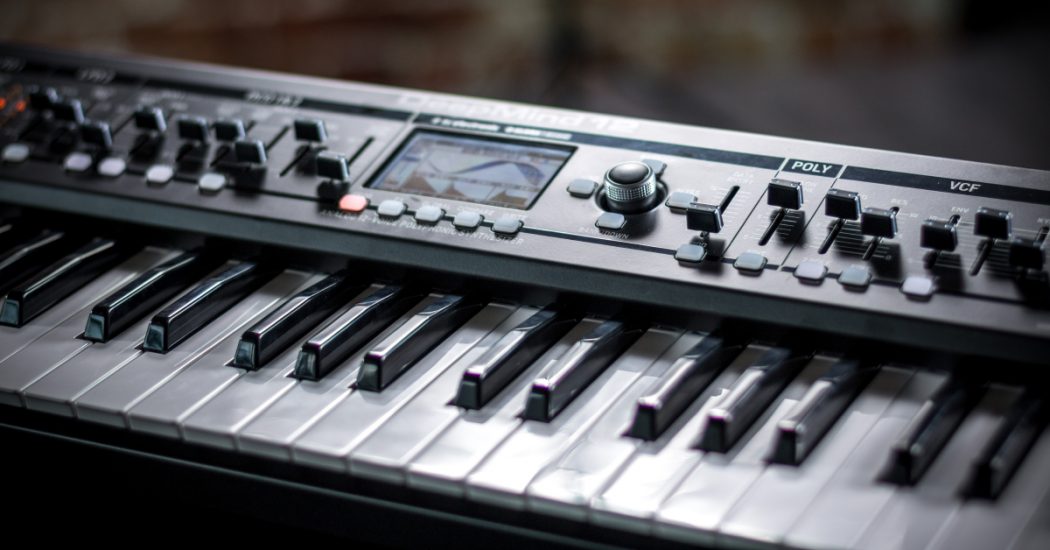
When I first became interested in synthesizers back in the mid-’70s, the word “analog” wasn’t used nearly as much because pretty much all the synthesizers back then were analog. My first live synth performance with a rock band was on a Moog Micromoog, which I used to re-create the opening of Rush’s “2112.” Over time, I bought a Sequential Circuits Prophet Pro One and a Korg PolySix. After that, though, my keyboards were all digital (Yamaha DX7, Korg M1, Kurzweil K2000). I loved those digital synthesizers, but as the years went by, I realized that I was missing something that I used to have with analog.
Today, we are living in a renaissance of analog synthesis and have more choices than we ever had in the past. My goal here is to help you decide which of the many analog synthesizers would give you a great start into this exciting world. The first thing you need to do is decide if you need a monophonic synth (one note at a time) for bass and lead sounds, or if you need a polyphonic synth (more than one note at a time) to also be able to play chords and pads. Since this is an article for beginners, I’m going to stick with analog synths under $1,000.
Monophonic Analog Synths
Arturia MicroBrute Analog Synthesizer
The Arturia MicroBrute is a great little starting synth due to its price and size, but it also has a surprising amount of sonic flexibility. Like many analog synths, it is “monophonic,” meaning that it plays one note at a time — no chords or pads here. It is quite capable of creating very musical lead lines and bass lines and can store eight different 64-step sequences. It also has a MIDI in jack, allowing you to use any size MIDI keyboard as a controller, and a USB port, allowing you to play it from a DAW or computer sequencer. But the really exciting feature is that there are six CV (control voltage) in jacks and two CV out jacks that allow you to reconnect the various parts of the synth in new ways, and to connect them to external synthesizer components.
Korg monologue Analog Synthesizer
The Korg monologue compact monophonic analog synth at a great price that offers 100 locations to store your presets. This is crucial if you’re using it to play live lead or bass lines and need to change sounds quickly. A clever OLED screen not only shows you preset names and parameter values, but it also displays the waveforms you’re creating, which is helpful in understanding what you’re doing. And each preset can have its own 16-step sequence plus the ability to move up to four parameters per step for interesting sonic animations.
Novation Bass Station II
The Bass Station II is a monophonic analog synth has a fantastic sound quality that makes for excellent lead and bass lines as well as sound effects. It has 128 presets, a 32-step arpeggiator with many pattern choices, a 32-step sequencer with four memory slots, MIDI in/out (standard and USB), and many parameters to experiment with.
Moog Minitaur Bass Synthesizer
If profoundly solid bass sounds are your primary interest, you just can’t beat Moog’s Minitaur. It’s based on Moog’s legendary Taurus bass pedal that supported the bottom end of many progressive rock bands. Its oscillators and filter are world-renowned, and you will use this synth no matter how many more you own. It can also do beautiful monophonic lead lines, as long as the notes don’t need to go very high (it truly is a bass synthesizer). Since it’s a MIDI module, you will need another keyboard with MIDI to play it.
Roland SE-02 Analog Synthesizer Module
The Roland SE-02‘s monophonic module is jam-packed with features, including three great-sounding oscillators (with six waveforms each), lots of parameters, and 128 sequencer patterns, each with 16 steps that can then be chained via 16 songs. Its 384 presets with 128 user locations give you plenty of space to store everything you’ve created. Control voltage ins, as well as MIDI in/out/USB, allow for lots of connectivity. You can even send the audio via USB.
Moog Mother-32 Semi-modular Eurorack Analog Synth and Step Sequencer
If you are a sonic explorer and an experimenter at heart, the Mother-32 is the finest self-contained, fully patchable monophonic analog synth that you can hold in your hand. The famous Moog oscillator and lowpass ladder filter are driven by a surprisingly powerful 32-note step sequencer that can hold 64 individual sequences. The thing that makes it “semi-modular” is that, with no CV cables plugged into it at all, it’s ready to make all kinds of beautiful sounds. When you’re ready to experiment with rewiring the internal components (or connecting with an entire world of external components), you will be rewarded with literally endless combinations of sounds. The built-in rubber buttons allow you to play all 128 notes across the keyboard, but it really shines when you connect it to any MIDI keyboard.
Polyphonic Analog Synths
Korg minilogue 4-voice Analog Synthesizer
Not too many years ago, I would have sworn that a 4-voice, 2-oscillator analog synth, with a delay effect and a 16-step sequencer per preset, was an impossible dream. I still can’t fathom how they did it at this price. If you need your analog synthesizer to play polyphonically (more than one note at a time), the Korg minilogue is definitely a serious contender. By using slightly smaller keys, it’s able to feature three octaves that can cover the entire range of 128 notes via the Octave +/- toggle. Connect it to a full-size keyboard, and you can play like a pro.
Behringer DeepMind 6, DeepMind 12D, and DeepMind 12 Analog Synthesizers
Amazingly, all three of these polyphonic analog synthesizers are under our price cutoff of $1,000. All three have the same features, except that the DeepMind 6 only has six notes of polyphony, and the DeepMind 12D – the desktop version of the DeepMind 12 – doesn’t have a keyboard. Two oscillators, plus a sub oscillator per voice, can each be modulated with two LFOs, three envelopes, and eight matrix modulations (virtual CV connections) for fantastic sound design possibilities. Add a 32-step sequencer per preset (of which there are 1,024!), plus an arpeggiator, and up to four high-quality effects at once, and you’ve got a phenomenal musical instrument.
Each of the analog synths above has detailed videos on our website to help you learn even more. When you’re ready, call your Sweetwater Sales Engineer at (800) 222-4700 for more guidance.











